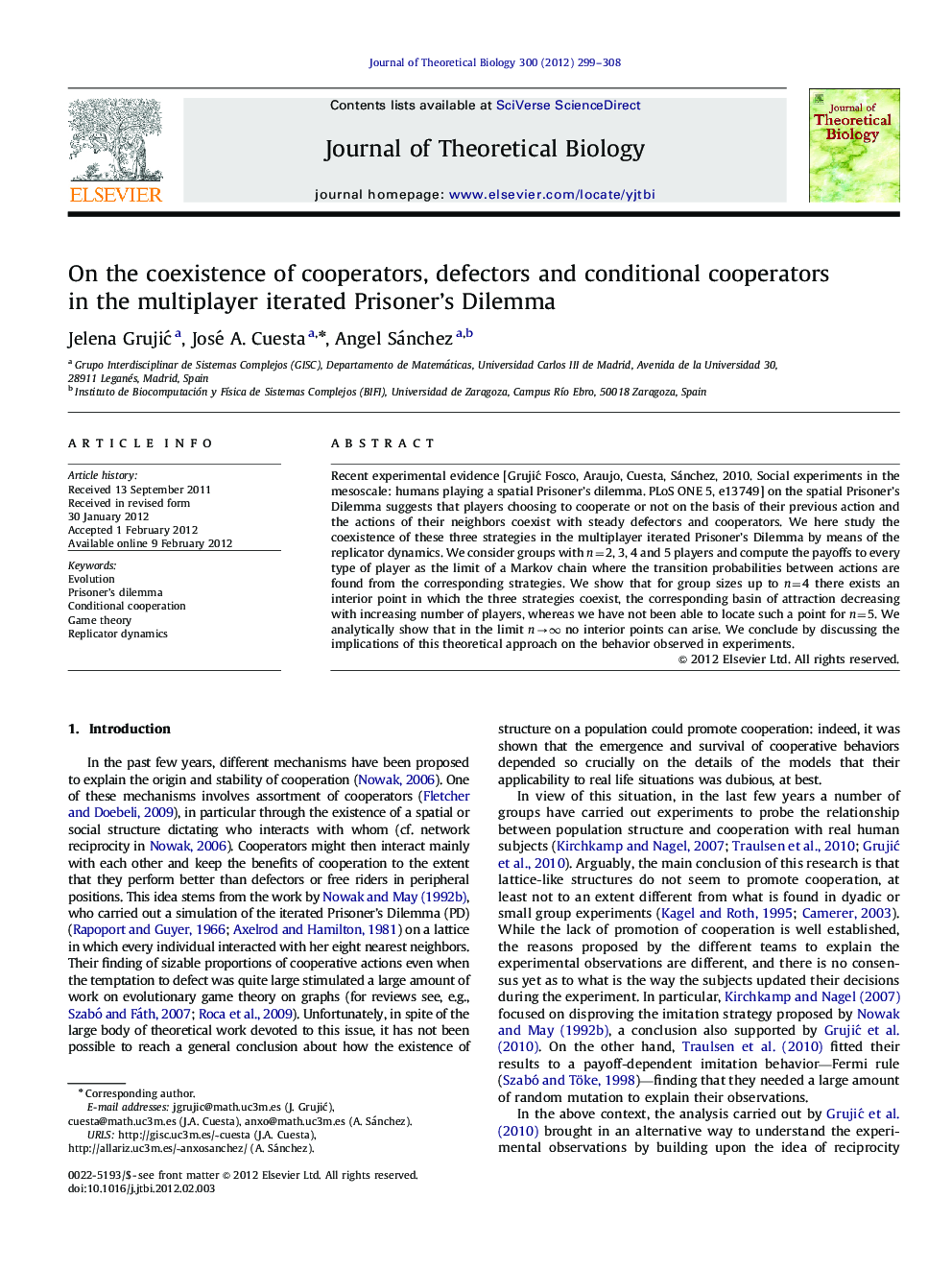| Article ID | Journal | Published Year | Pages | File Type |
|---|---|---|---|---|
| 4496774 | Journal of Theoretical Biology | 2012 | 10 Pages |
Recent experimental evidence [Grujić Fosco, Araujo, Cuesta, Sánchez, 2010. Social experiments in the mesoscale: humans playing a spatial Prisoner's dilemma. PLoS ONE 5, e13749] on the spatial Prisoner's Dilemma suggests that players choosing to cooperate or not on the basis of their previous action and the actions of their neighbors coexist with steady defectors and cooperators. We here study the coexistence of these three strategies in the multiplayer iterated Prisoner's Dilemma by means of the replicator dynamics. We consider groups with n=2, 3, 4 and 5 players and compute the payoffs to every type of player as the limit of a Markov chain where the transition probabilities between actions are found from the corresponding strategies. We show that for group sizes up to n=4 there exists an interior point in which the three strategies coexist, the corresponding basin of attraction decreasing with increasing number of players, whereas we have not been able to locate such a point for n =5. We analytically show that in the limit n→∞n→∞ no interior points can arise. We conclude by discussing the implications of this theoretical approach on the behavior observed in experiments.
► Experiments in multiplayer Prisoner's dilemma suggest that players can be cooperators, defectors or conditional cooperators. ► Only if they cooperated before, conditional cooperators cooperate more, the more cooperative partners they have. ► We study the evolutionary dynamics of these three strategies in an n-player iterated Prisoner's dilemma. ► For up to n=4 we find coexistence of the three strategies for parameters comparable to those of the experiments. ► For larger groups only defectors or only conditional cooperators can exist, depending on parameters.
